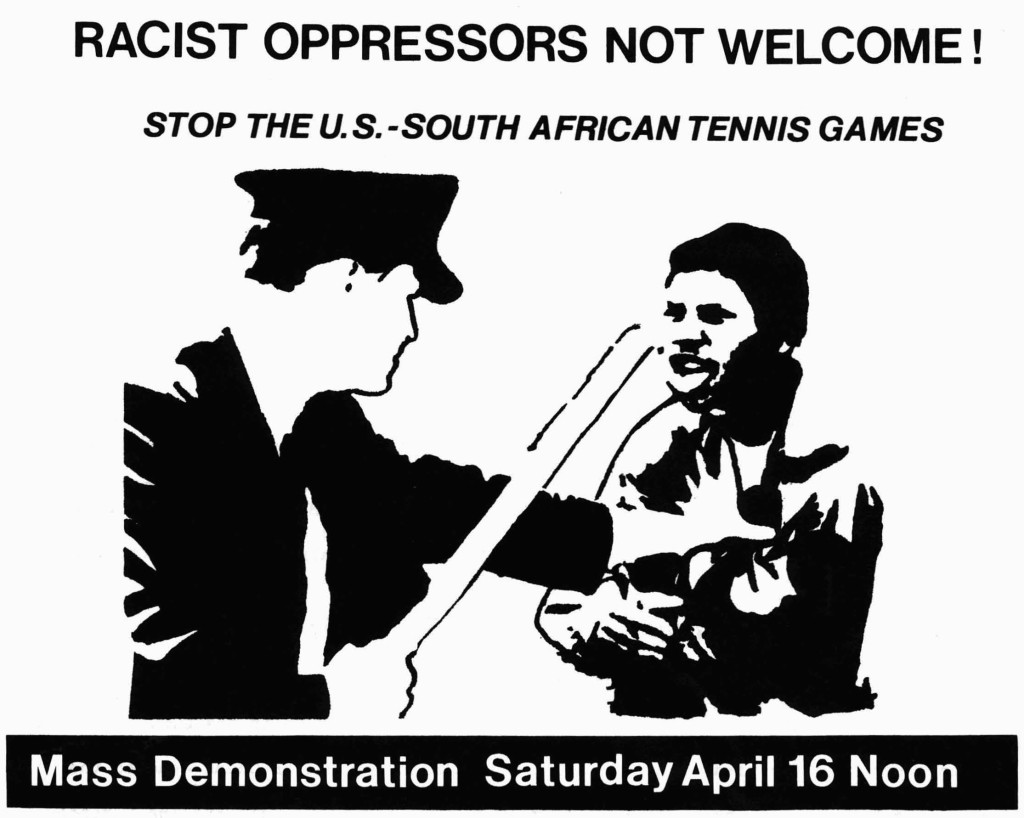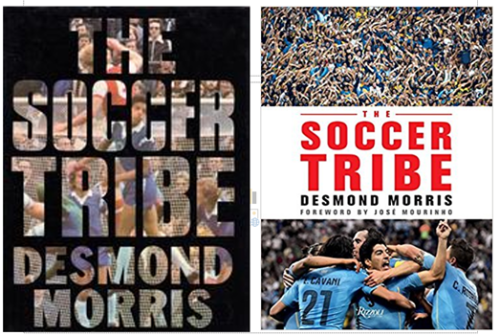Sport has gifted humankind with many unforgettable moments. “The Rumble in the Jungle” showed that tactical ingenuity, not only brawn had a place in boxing. Roger Milla dancing at a corner flag after yet another goal in the 1990 World Cup signaled African football’s arrival on the world stage. The drive and determination of Queen Serena’s reign will inspire many generations to come.
The 2016/17 PSL season in South Africa doesn’t usually make it on to the “greatest moments in sports” list. But perhaps it should. It gave us an unusual finalist for the 2017 FIFA goal of the year, also known as the Puskas Award.
Oscar Masuluke’s remarkable acrobatic overhead kick goal for Baroka FC against Orlando Pirates in an ABSA Premiership match was an act of pure athletic genius. The context in which it was scored underscores just how extraordinary it was. Baroka FC are relative newcomers to the PSL and hail from the backwaters of the Limpopo province, while Orlando Pirates are the fabled team from the big city.
2017 should have been a festive year for the legendary Pirates as the club celebrated its 80th birthday. It’s been a chequered eight decades of existence for The Mighty Bucs, punctuated by a pioneering spirit, legendary players, historic triumphs, and constant coaching changes. The great team of 1973, which swept all before them, was guided by two different coaches. When Pirates won the African Champions League in 1995, the hot seat was exchanged between Mike Makaab, Joe Frickleton, and the late Ronald Mkhandawire. The double- and treble-plundering sides of 2010/11 and 2011/12 had three different coaches steering the Buccaneers’ ship.
When Pirates faced Baroka on October 31, 2016, they were led by their 6th coach in six years. Pirates had taken the lead in the 48th minute through Justice Chabalala. As the game progressed, the Bucs seemed content to defend a one-goal lead.
Six minutes into stoppage time, Baroka won a corner kick and Masuluke, the lanky Boroka keeper, frantically sprinted forward for a last throw of the dice. Jackson Mabokgwane, the hapless Pirates keeper parried the ball away and it sailed over Masuluke’s head.
The danger seemingly cleared. But the football gods had other ideas. Masuluke executed a perfect bicycle kick, and the ball looped into the top right corner of the Pirates goal.
It was a moment of wonder that has eternally engraved its place in South African sports folklore. Goals like this are as common as Halley’s Comet, hence its nomination for the FIFA Puskas Award. In the end, Olivier Giroud’s “scorpion kick” goal for Arsenal denied Masuluke the honor of becoming the first goalkeeper to win the goal of the year award.
If sport is art, as CLR James famously wrote, then beauty is in the eye of the beholder.
South African Soccer NGO in the Spotlight
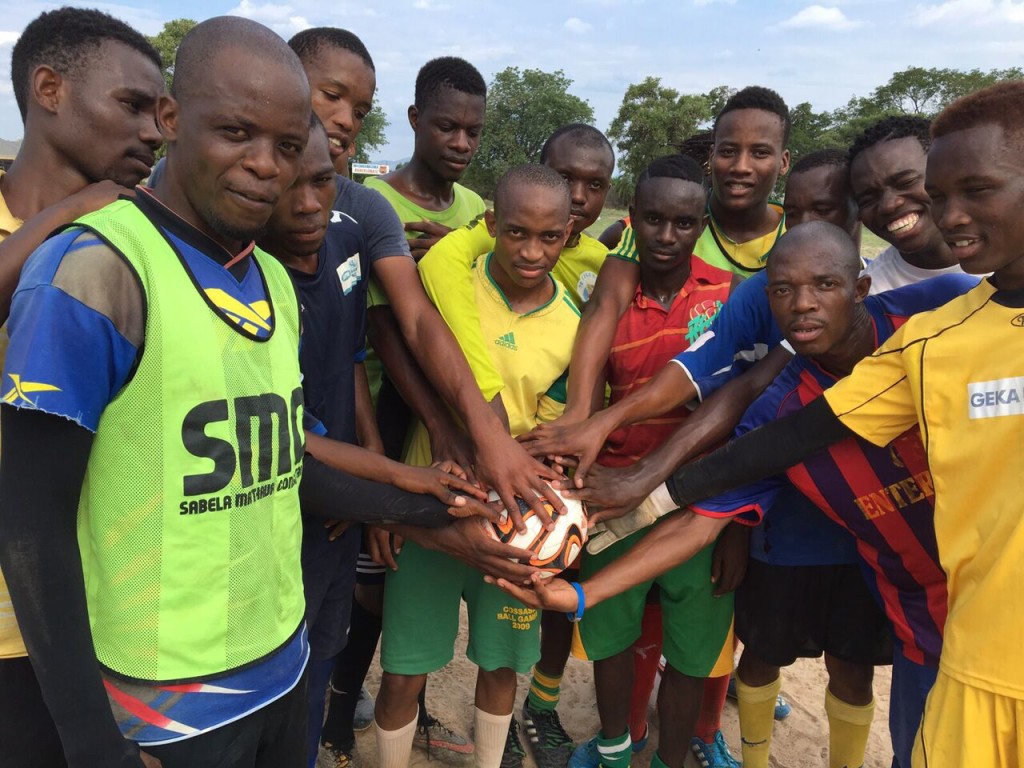
Kabelo “KB” Mashinini, Thabiso “Boyzzz” Khumalo and Thabang “Cosmos” Matsoko are the heart and soul of the Umhlaba Vision Foundation (UVF) in South Africa. In a recent piece published in the Huffington Post, the three men discuss their nonprofit organization that since 2007 has provided local boys with overseas educational experiences through soccer.
“Hailing from the Meadowlands section of Soweto, Mashinini, Khumalo and Matsoko have impacted their community and country significantly over the last decade,” the article states. “What we’re doing,” says Michigan-based Khumalo, “is bringing talented student-athletes here to go to school and then when they do good in soccer and in school, they get two opportunities.”
“Because most of these kids are like me, where I only depended on soccer, and if soccer didn’t work, I hadn’t considered what else I’d do,” Khumalo said, “I decided to create the foundation to help the kids of South Africa and make my contribution to society using something I love and am passionate about.”
UVF has important Michigan connections through Khumalo and sponsors such as Madonna University Athletics, AFC Ann Arbor, Concordia Ann Arbor Athletics, Northville Rush, and Michigan ODP.
Read the full article here.
Nelson Mandela would have been proud of Colin Kaepernick and the black (as well as a few white) U.S. athletes involved in the national anthem demonstrations against police violence and systemic racism. “Sport has the power to change the world,” Mandela believed. “It has the power to inspire. It has the power to unite people in a way that little else does. It speaks to youth in a language they understand. Sport can create hope where once there was only despair.”
This weekend I am presenting a paper that puts some of these issues in historical perspective at the 14th North Eastern Workshop on Southern Africa.
Using a mix of primary and secondary sources, “Sport and Social Justice in South Africa: Historical Reflections” shows how soccer, rugby, cricket and other sports carved out spaces in which to contest white power and raise awareness among athletes, coaches, officials, and fans of the evils of racism. It explores how black (and some white) sportsmen and women, South African and not, over the course of the 20th century worked hard to connect sport to advocacy for equal rights, citizenship, and the reduction (or elimination) of unjust inequalities.
After the rise of apartheid in 1948, a number of sports activists overtly challenged segregation, mainly by launching a global boycott of white South African sport. Sports sanctions, beginning with a FIFA suspension in 1961 and continuing with expulsion from the Olympics in 1970 and eventually from nearly every major sport, propelled the Anti-Apartheid Movement and contributed to the struggle for national liberation.
In the final section, the paper grapples with the impact of the commercialization of sport in the 1980s and 1990s and its changing social and political role during the transition from apartheid to democracy. In doing so, it notes the increasing marginalization of social justice initiatives and discourses in sports. Since the end of the boycott in 1992, the lion’s share of the medals, money, glory, and career opportunities has gone to a few historically advantaged white men and some members of the new black upper-middle class.
For just about everyone else, the pride elicited by Olympic and world champions Caster Semenya and Wayde Van Niekerk sits alongside sport’s fading willingness to meaningfully address inequality and injustice in the age of Jacob Zuma, Marikana, and #FeesMustFall.
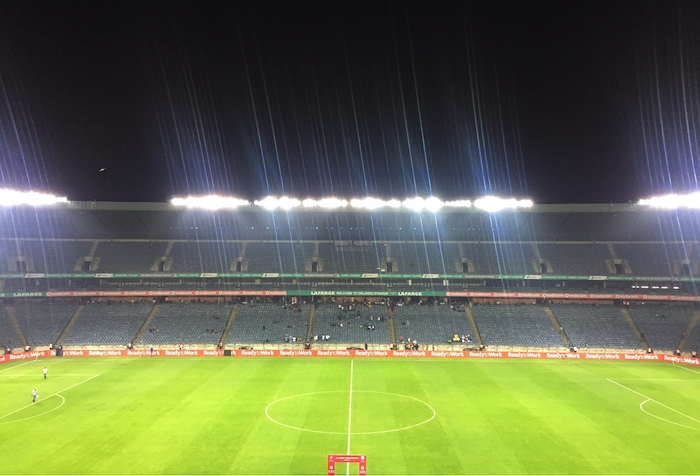
The welfare of South African football used to matter beyond its borders.
In 1974, for example, the Brazilian João Havelange won the FIFA presidency in a fiercely contested election against the conservative English incumbent, Sir Stanley Rous. He canvassed for votes in Africa, Asia and the Americas, sometimes with Pelé in tow. The businessman and former Olympic swimmer promised marginalized FIFA constituencies additional berths in the World Cup finals and greater funding for soccer development programs. Havelange also sided with African activists and the global Anti-Apartheid Movement to keep South Africa out of FIFA. Africa’s delegates reciprocated with their votes and the Brazilian supremo went on to transform FIFA into a massive global business, which he ruled with an iron fist for the next quarter century.
Since readmission to FIFA in 1992, South Africa has won two continental titles at club level and one at senior national team level. Its Premier Soccer League, according to World Soccer magazine, ranks 25th in the world (alongside Scotland). The women’s game has also grown, though significant challenges remain. The country’s successful hosting of the 2010 World Cup symbolized the great advances in South African football, particularly its organizational sophistication and financial resources.
Despite such undeniable progress, local football hardly resonates internationally anymore. In fact, many South African fans and pundits are disillusioned about the state of the domestic game.
Like almost everyone else in the early 1990s, my peers and I were fascinated by the exciting new times ushered in by the demise of apartheid. We were scrawny young boys who, like kids anywhere, lived for the game. We believed readmission into world football ignited the possibility of a future professional playing career. Things worked out differently for us.
On a recent visit to the Lebanon neighborhood of Mabopane, the township of my teenage years, it was disheartening to see how the game was no longer a central part of social life in the community in which I grew up. The dusty fields where we contested many epic duels are covered with shrubs. Those pitches that are still in playable condition are occupied by charismatic churches, which are flourishing in many poor African communities by selling salvation to people in hardship.
Grassroots football, at its best, can serve as a bulwark for a wide range of social ills that thrive where recreational resources, human and material, are scant. Any community with “redundant youth” who have lots of free time is a recipe for disaster. No wonder Mabopane and other townships on the outskirts of Pretoria are at the epicentre of the nyaope street drug epidemic ravaging South Africa today.
The grassroots game has more players and coaches than the formal game administered by the South African Football Association. Even though informal football is neither expensive to play nor to administer, it receives minimal financial investment and is wracked by insecurity and instability. This is why residents of Mabopane, like thousands of fútbol-loving South Africans, take it upon themselves to ensure the vitality of the grassroots game.
Blaming the administrators and corporate sponsors entrusted with the game’s welfare is understandable, but communities can ill-afford to delegate responsibility for social health to people and structures who do not genuinely have their interests at heart. The July 29 tragedy at FNB Stadium, which killed two fans and injured more than a dozen people in a gate crush at the Kaizer Chiefs-Orlando Pirates derby, is a case in point.
The tragedy showed how South African soccer’s leadership struggles with ensuring spectator safety at big matches while continuing to do very little for the development of the sport at the bottom of the the pyramid. Until these fundamental issues are resolved, black families will continue to worry every time their loved ones go to a football match, whether at the neighborhood sandlot or at a World Cup stadium.
Pan-African Sports Studies
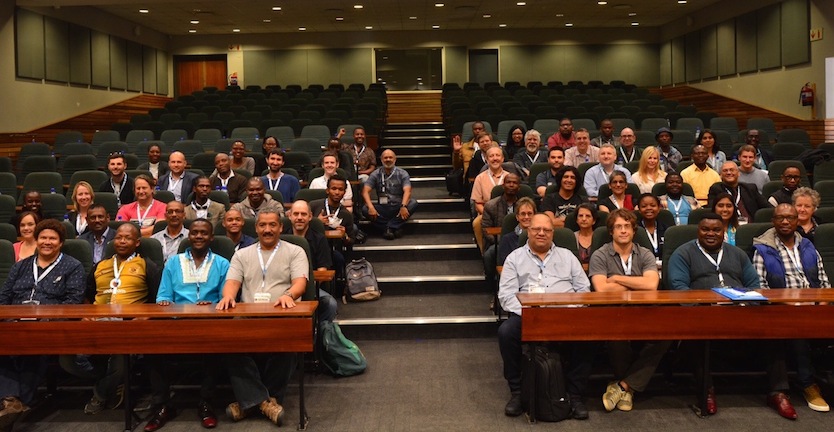
The University of Zambia will host the 12th Sports Africa conference on March 26-28, 2018. The theme of the conference is: “Pan-African Sports Studies: Beyond Physical Education.”
The conference in Lusaka will bring together sports scholars and practitioners from African, North American, and European Universities working on a diversity of topics in a wide range of disciplines.
The event builds on the April 2017 conference hosted by The Institute of Reconciliation and Social Justice at the University of the Free State in South Africa. I joined scholars from around the continent and the world for three days of presentations, workshops, and discussions in Bloemfontein around the theme of “Sporting Subalternities and Social Justice” (see photo above). In my keynote address, “Black Sport Matters: A History of Sporting Subalterns’ Quest for Social Justice in Africa,” I told stories about African athletes, administrators, and fans who used their visibility and influence to make powerful claims for equal rights and to advance a variety of social justice causes. Ranging from the colonial era to the contemporary period, I looked at the factors that motivated African sports activism, strategies and tactics, successes and failures, and connected this history with struggles against racism, sexism, and homophobia waged by black athletes today.
At next year’s conference I may present a co-authored paper with Liz Timbs, which examines aspects of youth sports development in South Africa through a history of the Izichwe Youth Football Academy in Pietermaritzburg, KwaZulu-Natal. More on this project as things develop, of course.
For more information about the 2018 Lusaka conference visit: http://sportinafrica.org/conference2018/
This post was originally published on Andrew Guest’s Sports and Ideas Tumbler page. It is cross-posted here with permission of the author.
I recently stumbled across a new (2016) edition of The Soccer Tribe by Desmond Morris, the peculiar tome originally published in 1981 with a mix of text and illustrations making a case for what amounts to an evolutionary socio-biology of soccer. Morris, most famous for The Naked Ape, explains that he was motivated by anthropological curiosity: “Hardly anyone seems to query the importance attached to the game. For those who do the kicking and those who watch it so avidly, the whole matter is taken for granted. Football is football, and of course it is fascinating, so what is there to question? For those who ignore it, it is plainly a stupid waste of time, so why bother with it? It is not worth discussing. Both sides overlook the fact that, viewed objectively, it is one of the strangest patterns of human behaviour to be seen in the whole of modern society.”
In seven sections and 44 chapters full of pictures, illustrations, and quirky charts, Morris then lays out an analysis of soccer in its ‘tribal’ dimensions: roots, rituals, heroes, trappings, elders, followers, and tongue. The whole thing is amazingly odd; in its scope, it compares to nothing else I’ve seen or read about soccer. In analyzing uniforms as tribal costumes, referees as tribal judges, or fan songs as tribal chants the book exhibits an imagination and ambition that I love (and have cited before here).
But since initially stumbling upon the first 1981 edition a decade ago something has always felt just a bit off about the book. It took this new edition, which seems to have been updated mostly in its illustrations (along with a few minor segments of text), to make me dig into that feeling.
The couple hundred words José Mourinho ‘wrote’ as a foreword to the new edition sets the tone: ““Total football has led to global football—on and off the field. And whoever fails to realize it doesn’t understand anything. Those who only know football know nothing about football.”
This blustering certainty is familiar from Mourinho, but it is also fundamental to the underlying premise of The Soccer Tribe – that all the patterns and rituals of modern soccer, and modern society, are a direct inheritance from humanity’s hunter-gatherer past. If Mourinho would have gone the academic route, I realized, he would have been a socio-biologist.
To be fair, Mourinho goes onto say something more interesting: “Those who only see twenty-two men chasing after a ball fail to understand its geometry, its ballet, its psychological depth, its true nature. It is the most faithful representation of human nature and its may faces. It is a tribe where the rationale of tactics, emotion, and the fun of the game all prevail.”
Though still a bit grandiose (and not overly convincing as to the question of whether Mourinho actually read the book), the basic idea of their being more to the see than ‘chasing after a ball’ is the real value of The Soccer Tribe.
The problem, however, was well articulated back in a 1983 review of the original book by Ian Taylor in the journal Theory, Culture, & Society.
What is it that is objectionable and in need of challenge in this account of association football? It is not, as we might at first think, an empirical matter (much of what is said about the origins, the present form of the game and its surrounding rituals is quite accurate and consistent with other well-respected accounts). But there are empirical silences. In the familiar fashion of most sociobiology, there is a great emphasis on football as a (naturally-evolving) form of male-bonding and, indeed, of male “warriors” (who proceed, we are told, to create homes for the “warrior mates” that are peaceful retreats from the violence and stress of the field of play”) (p 181). The account is therefore silent on the considerable growth of women’s participation in the playing of soccer In recent years, especially in North America. Again, the celebratory discussion of soccer’s present status as a world sport is couched as if some other universal and natural logic is at work. This reads very oddly in 1982, not only for the British, German and other soccer lovers worried for the future of the sport in the light of the massive reductions in attendances, but also for students of sport who have noticed the spectacular growth of a genuine plurality of spectator and participant sports in most developed countries.
The Soccer Tribe and socio-biology, in other words, present a totalizing account of human behavior that ignores the dynamism of culture. Women’s soccer is a key counter-example. If soccer is a male warrior ritual to satisfy our hunting and fighting brain modules, what to make of women’s soccer and women fans? Taylor phrases it nicely (if academically): “The empirical display of soccer as a natural form, spanning all cultures and time, masks the specificity of the game’s significance in particular social formations.”
The game itself, in the phrasing I tend to prefer, is mostly just an empty cultural form.
And, speaking of empty, the other substantive review of the original 1981 Soccer Tribe book that I could find was by the novelist Martin Amis for the London Review of Books. Amis, after a strange and extended prattling on about the English national team’s performance in qualifiers for the 1986 World Cup, dismisses Morris in two withering paragraphs, starting by noting that a soccer manager left alone with the book might “die of inanition”:
“In The Soccer Tribe Morris maps out the connection between ‘ancient blood sports’ and ‘the modern ball game’. Nowadays, the goalmouth is ‘the prey’, the ball ‘the weapon’, and the attempt to score ‘a ritual aim at a pseudo-prey’. Is this true? Or, more important, is this interesting? Morris goes on to say that ‘in England, there are four “divisions”, presenting a parody of the social class system.’ He then traces the analogies between football and religion: ‘Star players are “worshipped” by their adoring fans and looked upon as “young gods”.’ Later on, he develops a far more compelling thesis, arguing that . . .
Ah, but the sands of space are running out. That’s enough football for today. I only have time to add that Morris’s book is handsomely packaged, that the pictures are great, magic, brill etc, and that the text is an austere, an unfaltering distillation of the obvious and the obviously false.”
Amis’s point, beyond being arrogant and dismissive, seems to be that it is hard to be an intellectual interested in football—and Morris fails unreservedly.
But I think that is too harsh. The Soccer Tribe is like much socio-biology (and contemporary evolutionary psychology): simultaneously problematically reductionist and thought-provoking in a challenging way. I find it interesting, for example, that The Soccer Tribe shows up as ‘cited by’ 250 academic works in Google Scholar – though a crude marker, it is clear from browsing those citing works that the book inspired some academics to new ways to think about the game.
But it doesn’t yet seem to have inspired another similar effort–I’ve yet to see another book that takes on the totality of soccer culture in an intentional way. The 2016 ‘new edition’ ofThe Soccer Tribe thus doesn’t need much updating beyond the pictures both because the analysis freezes culture as permanently set by evolution, and because not enough of significance has come out since 1981 to offer a more dynamic theory of the game as a whole. That may no longer be the way of academic work on soccer – which has indeed done much to chip away at understanding pieces of the game – but it sure would be fun to see.
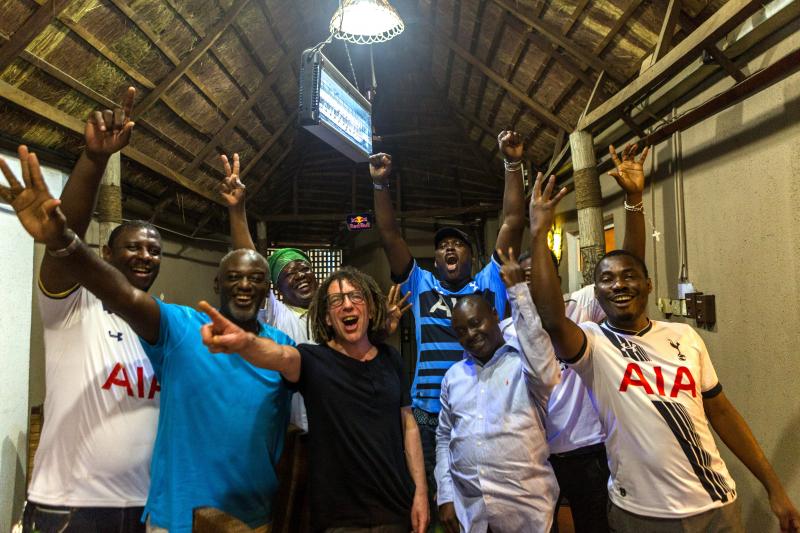
The English Premier League is an obsession for millions of African fans. Author and fútbologist David Goldblatt recently traveled to Lagos, Nigeria, to find out what this cultural phenomenon looks like and why there is such deep reverence for Arsenal, Manchester United, Chelsea, Spurs, and . . . Bournemouth.
In a newly released piece for Bleacher Report, Goldblatt hears from Emeka Onyenufuro, founder of Arsenal Nigeria, who tells him that “Monday to Friday lunchtime, I’m working in my job [as a manager in the power industry], but from Friday afternoon to Monday morning, it is all Arsenal.”
The quality of EPL play and the excitement of watching some of the world’s best players, including N’Golo Kanté, Victor Moses, Yaya Touré, and many other African superstars, partly explains the intensity of local passion for and dedication to the EPL. But another explanation is that the middle-class Nigerian men at the heart of this piece have willingly capitulated to the EPL’s “attention merchants” (Tim Wu docet): “It’s the branding. . . it’s just so professional,” a fan explains.
The author takes us into various public viewing spaces where the South African-owned satellite provider DSTV beams in live games, highlights, and talk shows that collectively stoke the obsessive compulsions of the Nigerian EPL fan. When not watching matches (and praying that frequent power cuts don’t ruin crucial moments in the broadcast), the lads follow their favorite clubs on social media for several hours a day.
The piece also features a fascinating description of the Socialiga, a football and basketball league and “social space to network with their peers, flirt and raise some money for charity.” It left me wanting to know even more about this astonishing kind of grassroots social entrepreneurship.
The Nigerian photographer Andrew Esiebo’s images complement the prose quite beautifully. And Esiebo’s camera does not lie: David Godlblatt seemed most at home in Lagos among his Spurs Nation mates (see photo above).
Read the full article here.
